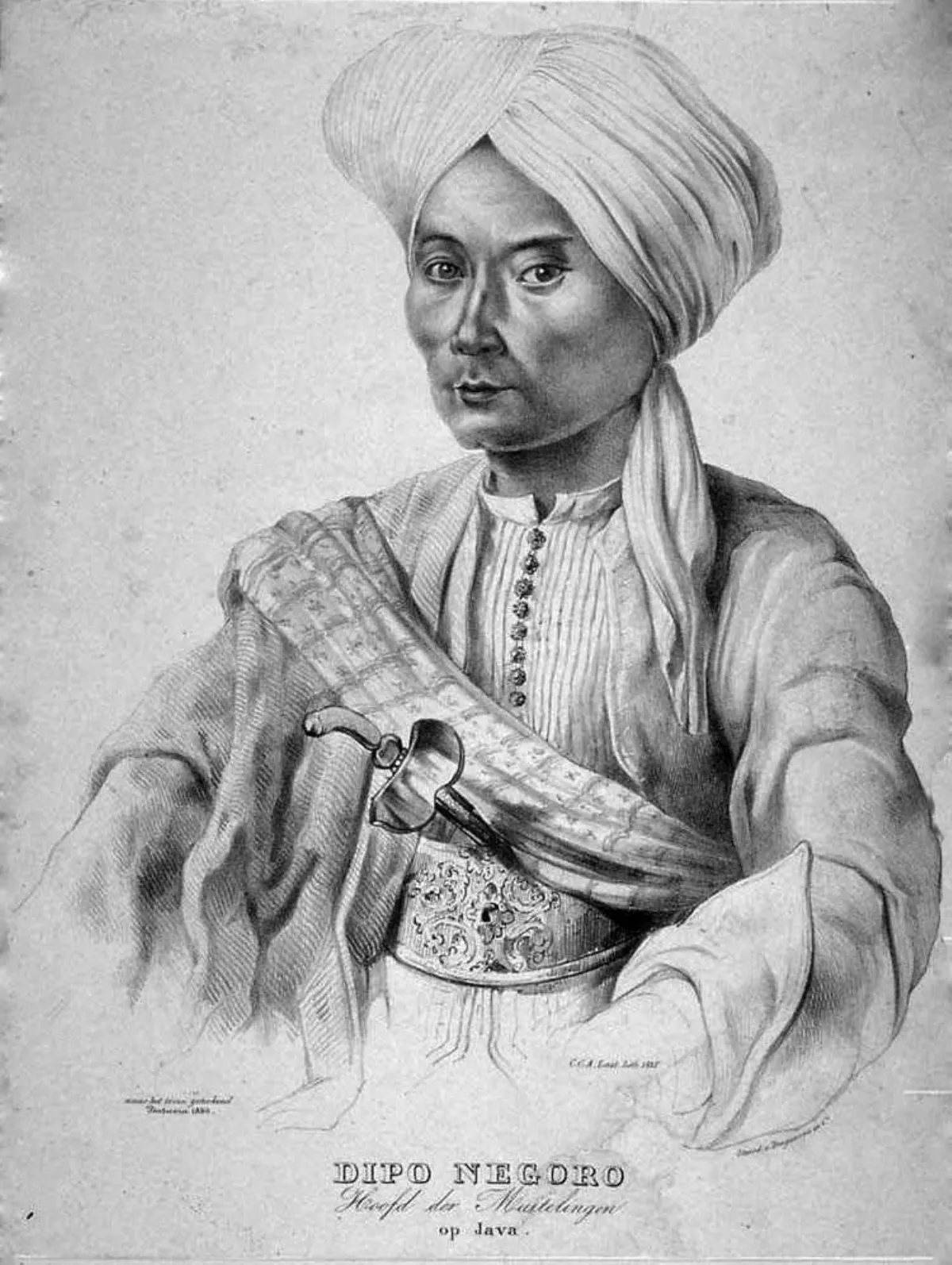 1.
1. Prince Diponegoro, known as Dipanegara and Dipa Negara, was a Javanese prince who opposed the Dutch colonial rule.

 1.
1. Prince Diponegoro, known as Dipanegara and Dipa Negara, was a Javanese prince who opposed the Dutch colonial rule.
Diponegoro was widely believed to be the Ratu Adil, the just ruler predicted in the Pralembang Jayabaya.
From 1829, Diponegoro definitively lost the initiative and he was put in a defensive position.
Diponegoro's forces targeted the Chinese minority in Java in addition to the Dutch, for example the Chinese residents of Ngawi and Bengawan Solo's riverbanks.
The Diponegoro troops despised the Dutch and the Chinese as foreign infidels who had come to pillage Java.
In 1830 Diponegoro's military was as good as beaten and negotiations were started.
Diponegoro demanded to have a free state under a sultan and wanted to become the Muslim leader for the whole of Java.
De Kock claims that he had warned several Javanese nobles to tell Diponegoro he had to lessen his previous demands or that he would be forced to take other measures.
The circumstances of Diponegoro's arrest were seen differently by himself and the Dutch.
Diponegoro composed manuscripts on Javanese history and wrote his autobiography, Babad Diponegoro, during his exile.
In 1969, a large monument Sasana Wiratama was erected in Tegalrejo, in Yogyakarta city's perimeter, with sponsorship from the military where Diponegoro's palace was believed to have stood, although at that time there was little to show for such a building.
In 1973, under the presidency of Suharto, Diponegoro was made a National Hero of Indonesia.
Diponegoro is depicted in Javanese stanzas, wayang, and performing arts, including self-authored Babad Diponegoro.
Diponegoro's kris was long considered lost but has now been found, after being identified by the Dutch National Museum of Ethnology in Leiden.
The kris of Prince Diponegoro represents a historic importance, as a symbol of Indonesian heroic resilience and the nation's struggle for independence.